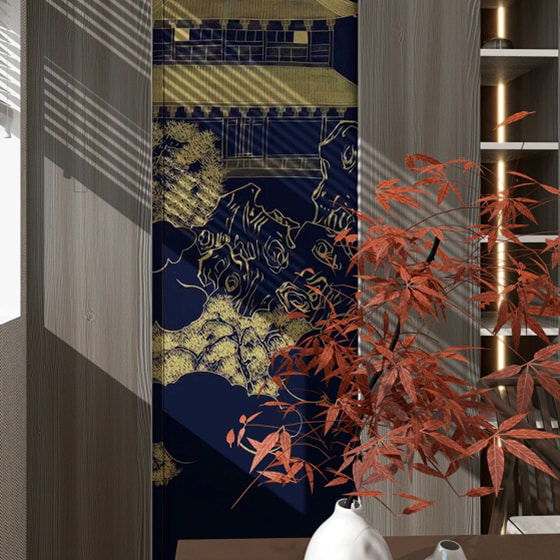
Our team is proud to offer on time guarantee and product guarantee to customer satisfaction.
Read More

To optimize the degradability or recyclability of decorative papers while ensuring their strength and aesthetics, it is necessary to comprehensively consider aspects such as material selection, production process improvement and environmental design. The following are specific measures and implementation paths:
Material selection
Optimize the ratio of short fibers and long fibers to improve the strength of paper by enhancing the fiber bonding force.
Use high-quality, low-bleached recycled pulp, which is both environmentally friendly and does not affect the aesthetics.
Non-wood fiber substitution:
Introduce plant-based materials such as bamboo pulp, sugarcane bagasse, and straw fiber, which are highly degradable and renewable.
Use cotton fiber or linen fiber to improve the toughness and printability of paper.
Add degradable additives
Bio-based resins:
Choose bio-based resins such as PLA (polylactic acid) and PBS (polybutylene succinate) to replace traditional fossil-based coating materials.
Maintain the smoothness of the paper surface while achieving rapid decomposition.
Natural adhesives:
Use starch-based, plant protein-based or natural latex adhesives to reduce chemical residues and improve the environmental friendliness of paper.
Harmless coloring materials
Plant dyes or mineral pigments are preferred, and chemical dyes containing heavy metals are avoided, while ensuring the durability and high aesthetics of the paper color.
Improvement of production process
1. Optimization of coating process
Degradable coating materials:
Replace traditional PE (polyethylene) or PP (polypropylene) coatings with water-based coatings or biodegradable coatings to improve recyclability.
Use vapor deposition technology to reduce coating thickness without affecting the barrier properties and gloss of the paper.

2. Improve fiber processing technology
Enhance fiber bonding:
Apply enzyme treatment technology to improve fiber flexibility and bonding strength and reduce dependence on adhesives.
Optimize paper strength through mechanical fiber pulping and reduce the amount of chemical additives.
3. Introduce peelable technology
Design a layered structure so that the coating and base paper of the decorative paper are easy to separate during recycling, thereby increasing the recycling rate.
Product design optimization
1. Control gram weight and thickness
Gram weight balance: Ensure that the paper is as light as possible to reduce raw material consumption while ensuring strength and durability.
Lightweight design: Combine composite material technology to reduce paper thickness while enhancing its physical properties.
2. Modular aesthetic design
Promote simple design, reduce the use of multi-color printing and complex textures, reduce the amount of printing ink and the difficulty of waste separation.
Develop designs that can form various patterns through splicing or cutting to extend the life cycle of paper.
Back-end processing and improved recyclability
1. Easy-to-recycle structure design
Single material structure: Try to avoid multi-material composite design, such as replacing paper-plastic composite with pure paper-based structure.
Glue-free edge sealing: Design self-sealing or folding structure to reduce dependence on synthetic adhesives.
2. Improve printing compatibility
Use water-based ink or UV curing ink instead of solvent-based ink to ensure that the paper still has high recyclability after printing.
Provide environmentally friendly printing solutions with high transparency and gloss to ensure that the aesthetics are not affected.
3. Optimize biodegradable performance
Improve degradation efficiency: Ensure that paper degrades quickly in the natural environment by adjusting the fiber content and coating material ratio.
Degradable testing and certification: Ensure that the product meets the degradation requirements of standards such as EN 13432 (industrial composting certification) or ASTM D6400.
Full life cycle management
1. Production stage: Reduce emissions
Promote recycled water and energy-saving drying equipment to reduce carbon emissions and waste emissions.
Use green energy, such as solar or wind energy, to optimize the carbon footprint of the production process.
2. Use stage: Extend life
Provide anti-fouling, moisture-proof and other functions to extend the use cycle of decorative paper and reduce the waste rate.
3. Recycling stage: Convenience design
Provide clear classification and recycling instructions to guide users to properly handle waste paper.
Work with paper product recycling organizations to establish a complete waste paper recycling supply chain.
By applying bio-based materials with high fiber content, a balance between environmental protection and performance is achieved on multifunctional decorative paper.
Through all-round improvements from material selection, production process optimization to product design, the degradability and recyclability of decorative paper can be significantly improved without sacrificing the strength and aesthetics of decorative paper. This not only meets the requirements of environmental regulations, but also meets consumers' expectations for sustainable products, creating more market competitiveness for enterprises.
We focus on environmentally friendly, healthy, and fashionable home decoration, making your living space shine with unique charm.
Copyright © Hangzhou Xinyue Decorative Materials Co., Ltd. All rights reserved.
Custom Decorative Papers Manufacturers
 English
English русский
русский عربى
عربى